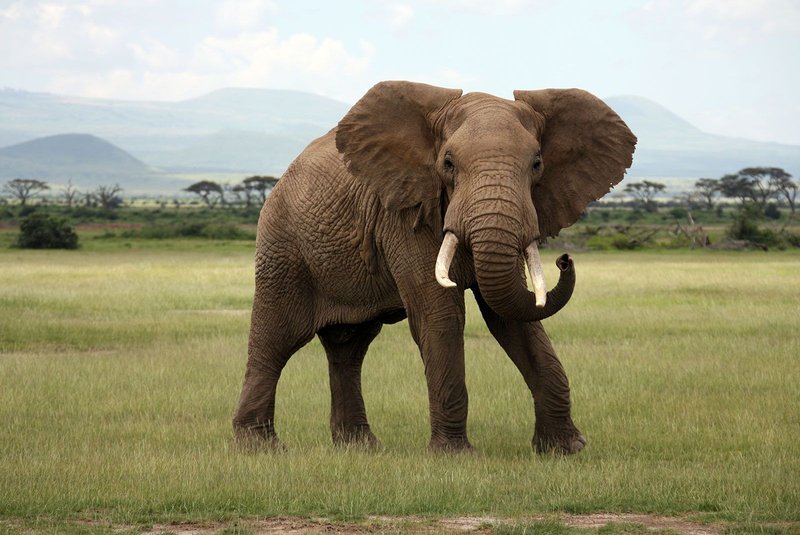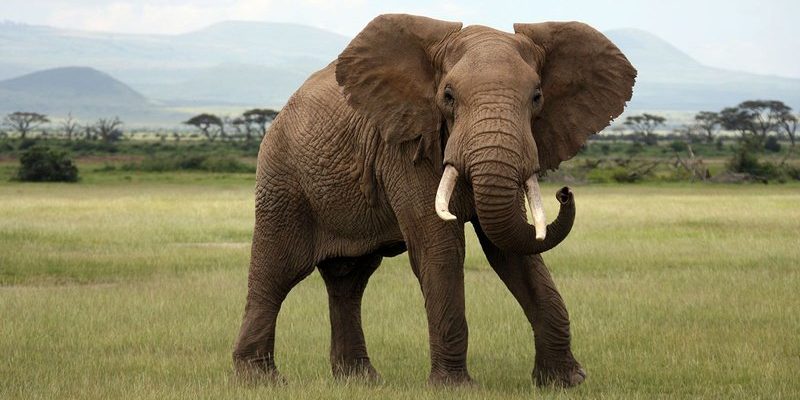
Let’s dive deep into the characteristics of the African bush elephant and explore when and why they might pose a danger to humans. Understanding these magnificent creatures can help us appreciate their beauty while also respecting their potential for aggression.
Understanding the African Bush Elephant
The African bush elephant, or *Loxodonta africana*, is truly a sight to behold. These majestic animals can weigh up to 14,000 pounds and stand about 10 to 13 feet tall at the shoulder. They live primarily in sub-Saharan Africa, roaming through savannas, forests, and grasslands. Their large ears help regulate their body temperature, while their trunks—an amazing fusion of nose and upper lip—allow them to communicate, forage, and even bathe.
Now, here’s the thing: despite their size and strength, African bush elephants are social animals. They live in herds led by a matriarch, typically the oldest female. This tight-knit social structure helps them care for their young, find water, and protect one another from predators. But, just like any animal, when they feel threatened or are protecting their young, they can become aggressive.
When Do African Bush Elephants Become Dangerous?
You might be wondering when an elephant, with its kind demeanor, turns into a threat. Generally, elephants aren’t aggressive unless they’re provoked, feel threatened, or are protecting their calves. For instance, if a human gets too close to a mother with her babies, that mother might charge to defend her offspring.
Additionally, during mating season, male elephants, or bulls, can become particularly aggressive. They enter a state called “musth,” where testosterone levels spike dramatically, leading to unpredictable behavior. This scenario makes encounters with these bulls especially risky; their size and strength can cause serious injury or worse in a matter of seconds.
Here’s a quick breakdown of situations where elephants might be dangerous:
- Protecting Calves: Mothers will charge if they feel their young are in danger.
- During Musth: Aggressive behavior can increase due to hormonal changes in male elephants.
- Provoked or Cornered: Any animal can act aggressively if it feels threatened.
How Do Elephants Communicate Their Aggression?
Elephants communicate a range of emotions, including aggression, through body language and vocalizations. You might notice an elephant flaring its ears, rumbling loudly, or stomping its feet when it’s feeling threatened.
For example, if you see an elephant waving its trunk or making loud trumpeting sounds, it’s likely warning you to back off. If you’re observing elephants from a distance, paying attention to these cues can be critical for safety. Remember, approaching too closely to a herd is an invitation for trouble, as they may interpret your presence as a threat.
In a way, understanding their communication is like deciphering a secret language. By respecting their signals, you can enjoy witnessing their beauty without inadvertently provoking them.
Accidents and Human-Elephant Conflicts
Unfortunately, human-elephant conflicts can occur, particularly in areas where elephants and humans coexist closely. Encroachment on their habitat, whether through agriculture or urban development, can lead to dangerous encounters. Imagine a farmer trying to protect crops from elephants that are simply looking for food—this can create tensions that result in attacks or even retaliatory killings of elephants.
Many local communities are now working to find solutions that protect both people and elephants. For instance, using methods like fencing, elephant corridors, or traditional scare tactics can help keep these animals at bay without harming them. It’s a delicate balance, and as our own habitats expand, it’s crucial to find a way to coexist with these majestic creatures.
Staying Safe Around African Bush Elephants
If you’re lucky enough to see African bush elephants in the wild, you’ll want to keep safety top of mind. Here are some tips to ensure a safe and enjoyable experience:
- Keep Your Distance: Always maintain a safe distance. A good rule of thumb is to stay at least 50 yards away, but more is better.
- Stay Quiet: Loud noises can startle elephants. Keep conversations low and avoid sudden movements.
- Follow Guidelines: If you’re on a safari, listen to your guide’s instructions. They know how to safely observe wildlife.
- Watch for Signs: Pay attention to the elephants’ body language. If they seem agitated, it’s time to move back.
Conservation Efforts and Their Impact
Conservation efforts play a significant role in reducing conflicts between humans and elephants. Protecting elephant habitats ensures they can thrive without coming into contact with humans as frequently. Organizations worldwide are working diligently to establish wildlife reserves and promote sustainable land use.
Projects like community-based conservation initiatives engage locals in protecting wildlife while also benefiting economically. Through education and awareness, communities learn the importance of preserving these animals, which in turn reduces negative interactions.
To illustrate, one successful program in Kenya involves local communities in eco-tourism efforts, allowing them to profit from wildlife sightings without harming the elephants. This fosters a sense of shared responsibility for these majestic creatures and helps create safer environments for both elephants and humans.
The Importance of Respecting Wildlife
So, can the African bush elephant be dangerous to humans? Yes, under certain conditions—but it’s crucial to remember that these situations can often be avoided with respect and understanding. Like all wildlife, elephants deserve our admiration and care.
By respecting their space, understanding their behavior, and supporting conservation efforts, we can appreciate these magnificent animals and coexist peacefully. The more we learn about them, the better equipped we are to appreciate their role in our world while keeping ourselves safe.
In conclusion, whether you’re viewing them from a distance or learning about their incredible lives, understanding African bush elephants helps foster a connection that respects their power and beauty. Let’s make sure future generations can also enjoy the wonder of these giants.

